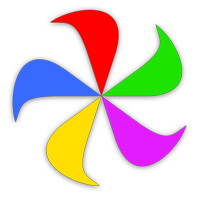Yesterday, Steve Miner published a method to make the menu bar in Mac OS X 10.5 “Leopard” opaque, non-translucent or non-transparent — whatever you prefer to call it.
While a lot of Leopard users will probably not even see the point in this, we are very happy to finally have a solution for one of our pet peeves with the Leopard. As some of you may know, we had even created our own little application for achieving the same thing a few months ago, but the method it employed didn’t work in the final, official Leopard.
Turns out you just have to set a certain environment variable to get rid of the translucent menu bar. However, there’s one thing about this we didn’t like: Once you’ve done so, the menu bar is very white, and it looks very plain.
So we revived that aforementioned application of ours, tweaked it a little, changed it’s name, and here we are: Menu Bar Tint draws a grayscale color gradient over your menu bar, making your newly opaque menu bar feel more at home among all the other user interface elements in Mac OS X. And if you feel like going wild with colors, you’re free to do so, too.
 Many Tricks
Many Tricks
